 |
 |
 |
| |
Major clinical outcomes in patients not treated with antiretroviral therapy (ART) at baseline in SMART; A rationale for a trial to examine early treatment of HIV disease
|
| |
| |
Reported by Jules Levin
4th IAS Conference, July 2007, Sydney, Australia
Sean Emery, Jacqueline Neuhaus, Andrew Phillips, Abdel Babiker, Calvin Cohen, Jose Gatell, Pierre-Marie Girard, Birgit Grund, Matthew Law, Marcelo Losso,
Adrian Palfreemen and Robin Wood for the SMART Study Group and INSIGHT.
AUTHOR CONCLUSIONS
--In early HIV disease, morbidity and mortality is probably higher than previously thought.
--Risk appears to be determined, at least in part, by time spent with lower CD4+ cell counts. (see graphs/tables below)
--The risk of OD and serious non-AIDS events is reduced by early versus deferred ART (a 5.7% reduction in absolute risk).
--The data require confirmation in a randomised clinical trial.
BACKGROUND
Cohort data describing morbidity/mortality in HIV disease
- Risk of AIDS persists for CD4+ >500 cells/mL1
- At any CD4+ cell count risk of AIDS is lower in ART treated patients2
- Risk declines following initiation of ART3
- Risk of serious non-AIDS disease (CVD, hepatic, renal) lower at higher CD4+ cell counts4-9
Hence
Strong associations between a modifiable risk factor (CD4+ count) and important clinical outcomes.
There are no high quality data with which to inform treatment decisions in patients with CD4+ cell counts higher than 350 cells/⊥
1. Cascade Collaboration. AIDS 2004
2. EuroSIDA. JID 2006
3. Egger M et al. Lancet 2002
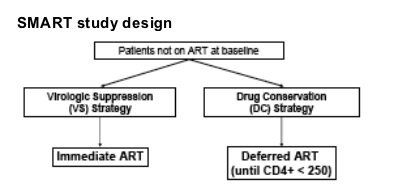
OBJECTIVES
Examine AIDS and non-AIDS outcomes in SMART not on ART at baseline.
The randomised comparison for these patients reflects immediate ART (> 350 CD4+ cells/⊥) versus deferred ART (<250 CD4+ cells/⊥).
Methods - patient population
1. Randomised in SMART
2. ART naive or
a). Not on ART at randomisation
b). > 1 plasma HIV RNA value in the 6 months prior to
randomisation
c). All pre-randomisation HIV RNA > 10000 copies/mL
Methods - endpoint definitions
Four categories
1. SMART primary endpoint (opportunistic disease (OD) and death)
2. OD (fatal and non-fatal)
3. Serious non-AIDS (CVD, hepatic and renal disease, non-AIDS cancers excl non-melanoma skin-cancers, non-OD deaths)
4. The composite of (2) and (3)
Statistical methods
--Follow-up data until Jan 11, 2006 included.
--Time to first event described using Kaplan-Meier plots.
--Hazard ratio (95%CI) for Deferred/Immediate ART calculated using Cox models.
--For the composite endpoint we determined event rates and CD4+ cell count as a time-updated variable for comparison between Deferred and Immediate
ART.
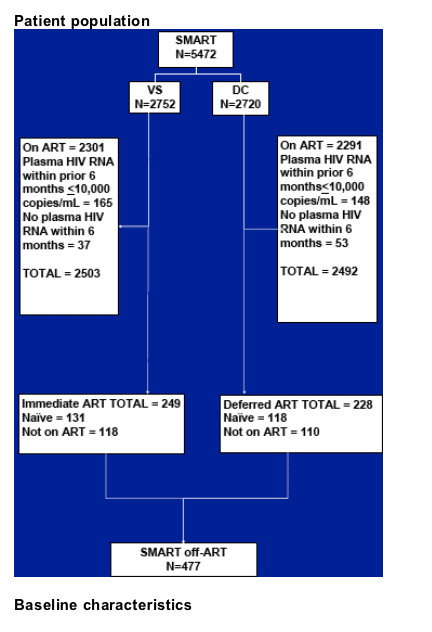
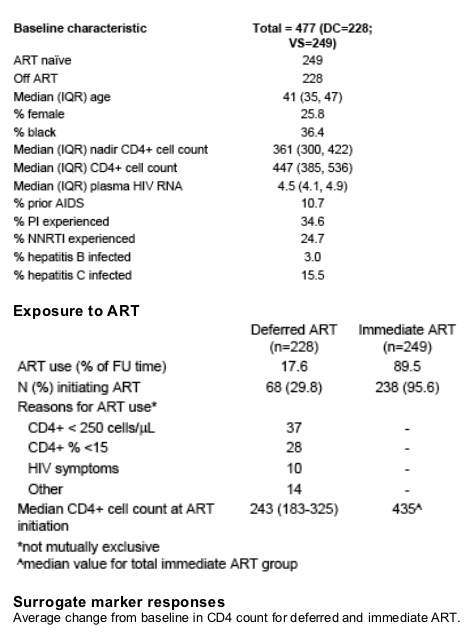
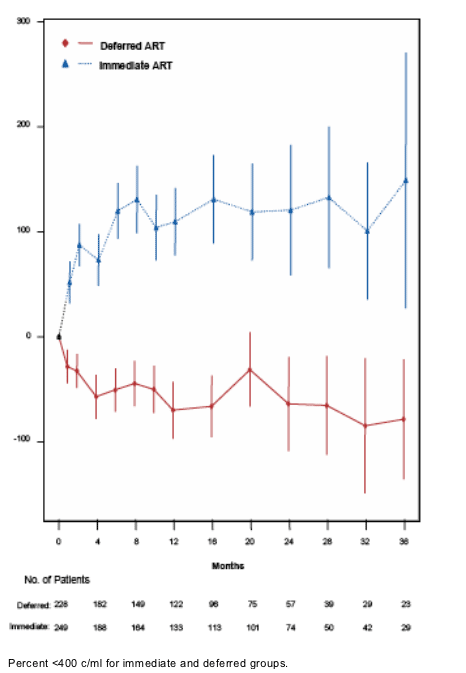
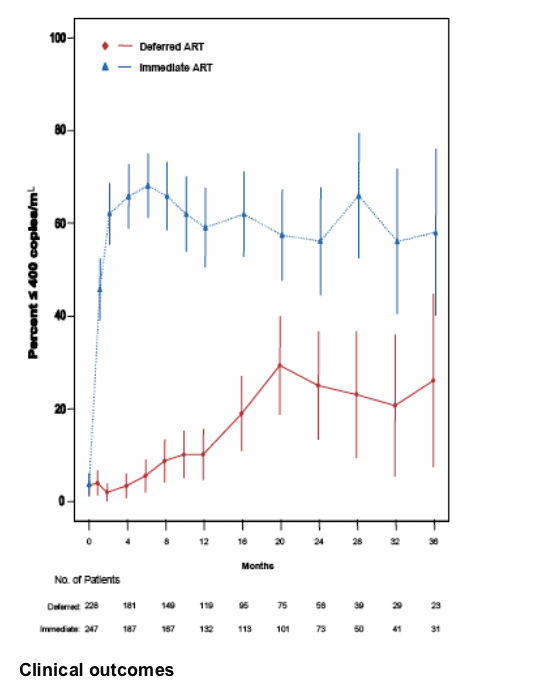
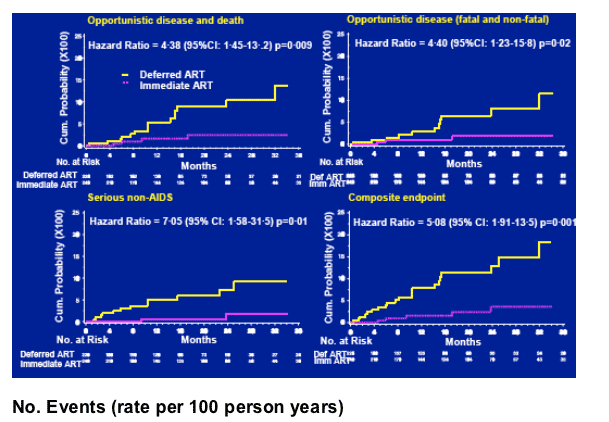
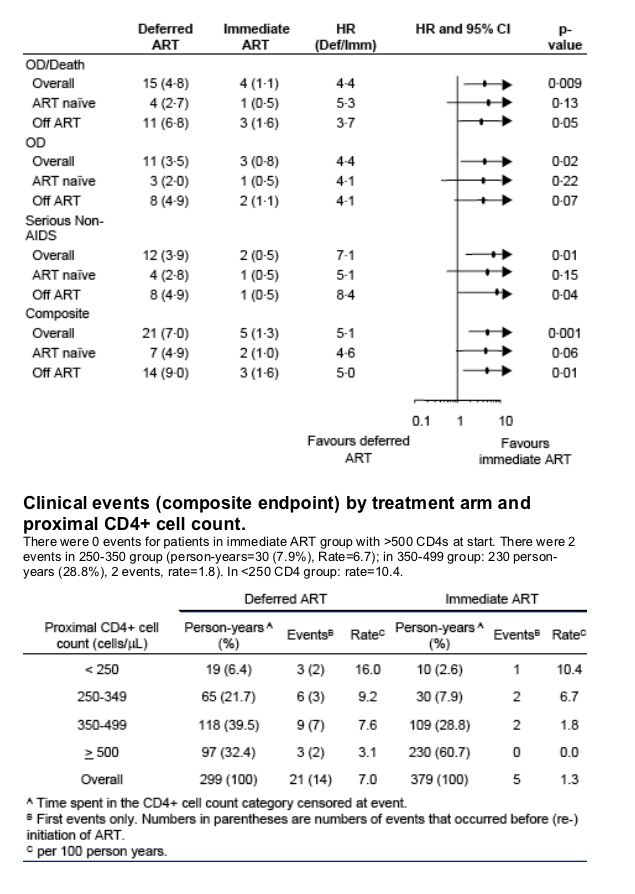
references>
4. DAD. CROI 2005
5. DAD. AIM 2006
6. Lau et al J AIDS 2007
7. DAD. CROI 2007
8. FIRST. CROI 2007
9. Cascade Collaboration. AIDS 2006
|
| |
|
 |
 |
|
|